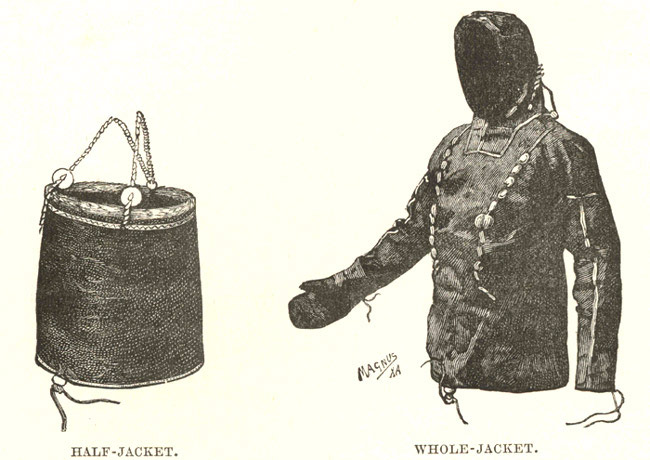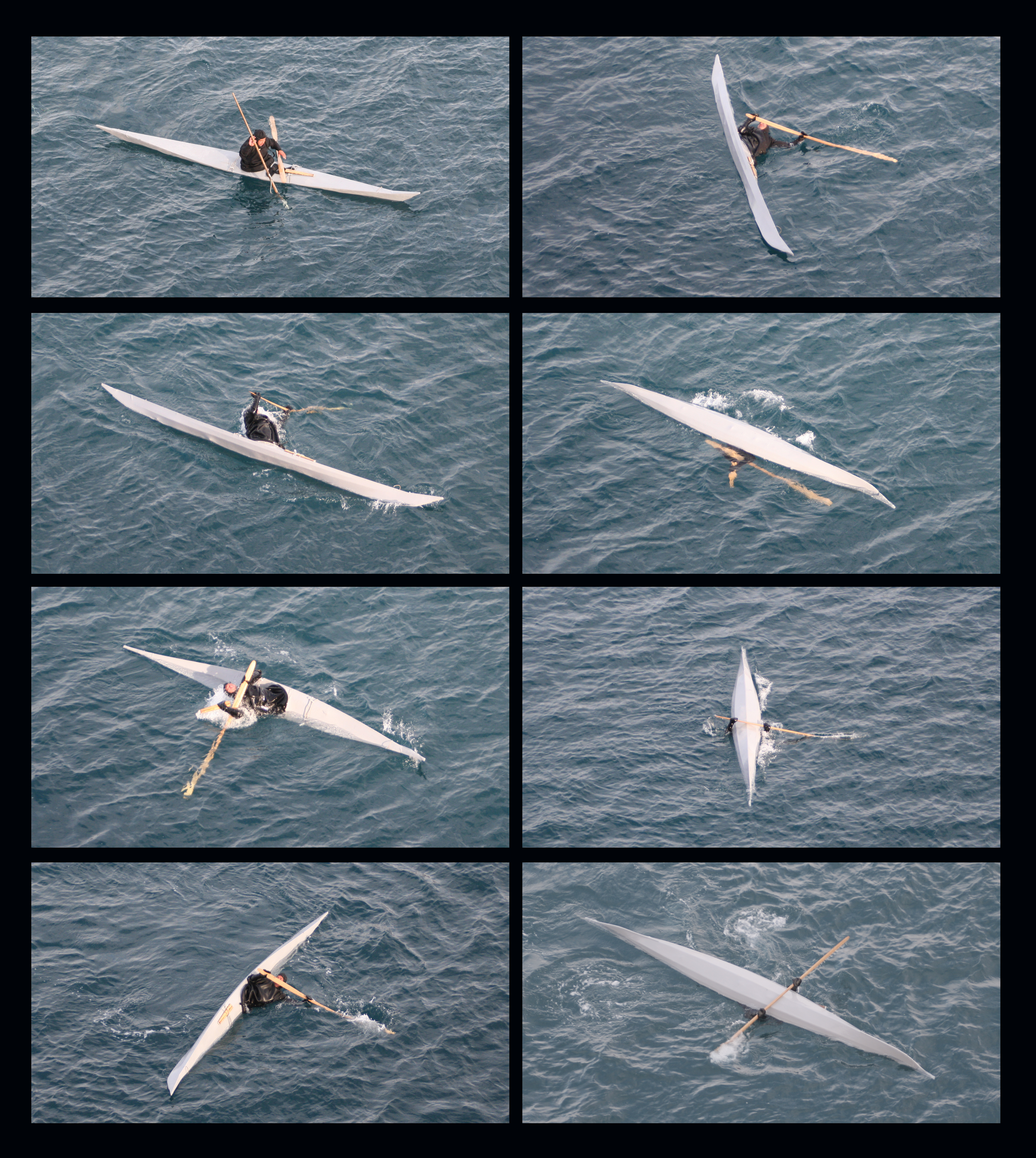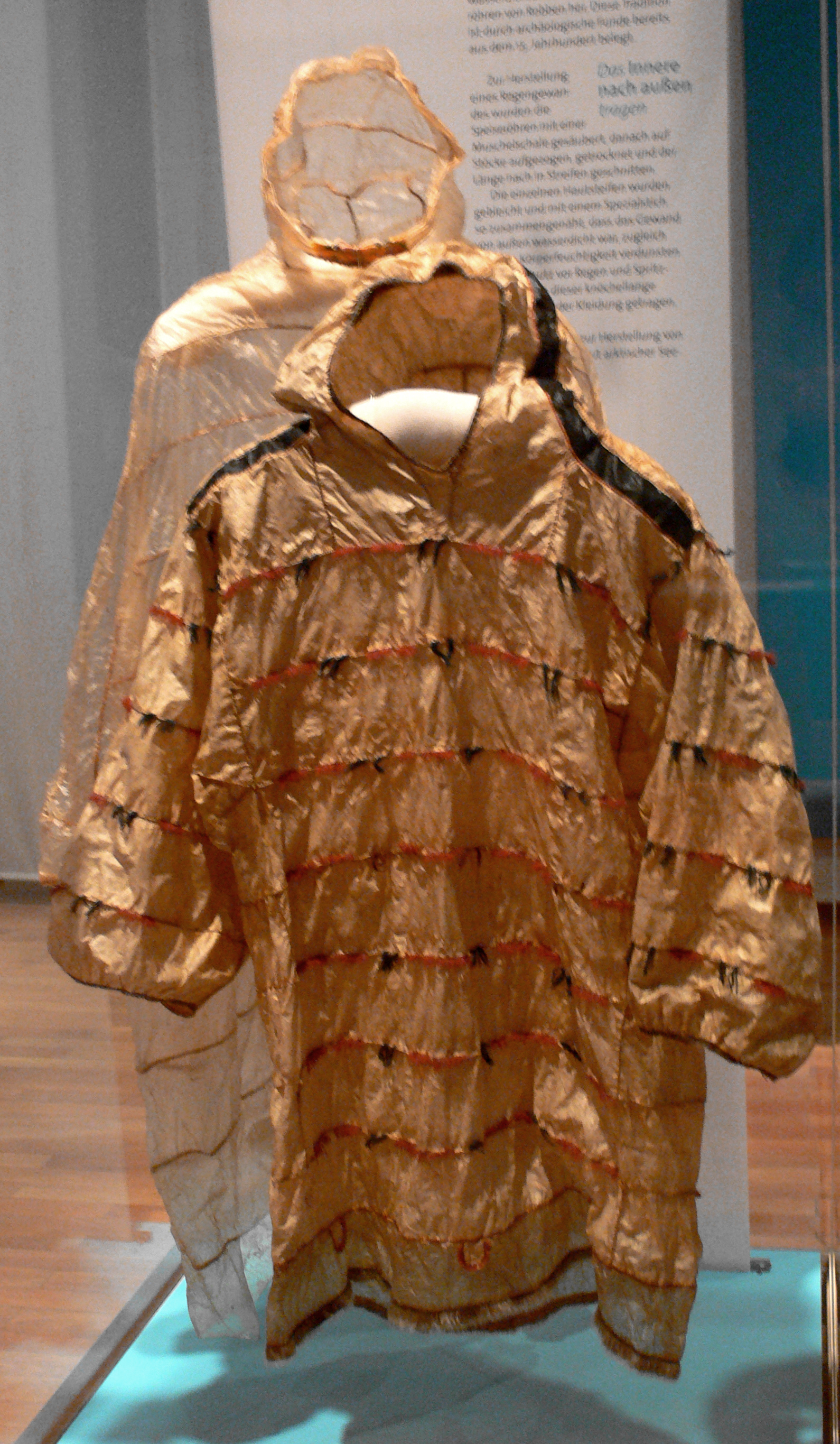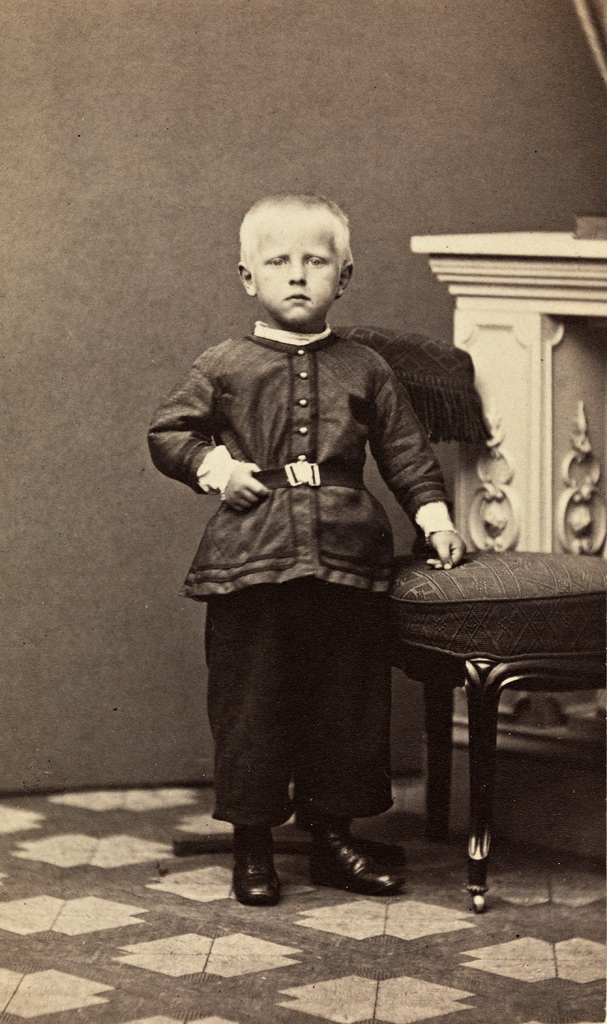|
Sprayskirt
A spraydeck (sprayskirt in N. America, akuilisaq or tuiitsoq in Greenland) is a flexible waterproof cover for a boat (in particular for a kayak or a canoe) with holes for the passengers' waists. Spraydecks are used to prevent water from entering the boat while allowing passengers to paddle or row. Spraydecks are used in breaking waves, on whitewater, in inclement weather, and in splashy sports. An alternative is the tuilik. Construction A spraydeck is made of water-tight cloth or neoprene. It is sized to fit over the opening, or cockpit, of the canoe or kayak, with holes for the waists of the passengers. The spraydeck generally seals around the rim of the cockpit and around the torso of each passenger. Each opening in a spraydeck must make a fairly watertight seal. The seal varies in quality. The deck can be made to seal in several ways, including elastic fabric, a hem containing an elastic cord and/or drawstring, and both. Boat types Kayak spraydeck Spraydecks are worn b ... [...More Info...] [...Related Items...] OR: [Wikipedia] [Google] [Baidu] |
Tuilik Nansen
A tuilik is an Inuit watertight jacket, used when paddling a kayak. It is sealed at the face, at the wrists and around the cockpit coaming. In this way the paddler can capsize and come back upright (using an '' Eskimo Rescue'' or kayak roll) without getting wet, and without getting any water into the kayak. The air trapped in a tuilik makes rolling easier. If the paddler comes out of their kayak, a tuilik provides considerable initial buoyancy, and the legs may be drawn up into the air pocket. PFDs may be worn over or under a tuilik or tuiliusaq. In summer months an '' akuilisaq'' (a spray skirt or spray deck) may be used instead. Many kayakers do not use a tuilik, but instead a separate spray skirt and kayaking top (often a drytop, something like a drysuit jacket), which usually seals around the waist, arms, and neck. A tuilik integrates the skirt and top into one piece of clothing, with a hood-edge seal rather than a neck seal. Tuiliks are generally less restrictive of moti ... [...More Info...] [...Related Items...] OR: [Wikipedia] [Google] [Baidu] |
Eskimo Roll
A kayak roll is the act of righting a capsized kayak by use of body motion and/or a paddle. Typically this is done by lifting the torso towards the surface, rotating the hips to turn the kayak upwards and applying a small force by means of the paddle to assist the torso back over the boat. A kayak roll was also known as an Eskimo roll. The roll is an important technique for paddlers on serious whitewater, as exiting the boat and swimming leaves the swimmer more exposed than remaining in the boat. History The skill of righting a capsized kayak was devised by the hunter-gatherer societies that also developed the kayak as a hunting boat, such as the Aleut and Inuit. The Greenlandic Inuit used several techniques that allowed the kayak to be righted with or without a paddle, also using only one hand, or without hands at all. A survey in Greenland in 1911 found that of a total of 2,228 hunters with a kayak of their own, 867 were able to roll. In 1605, some Inuit men and their ka ... [...More Info...] [...Related Items...] OR: [Wikipedia] [Google] [Baidu] |
Tuilik
A tuilik is an Inuit watertight jacket, used when paddling a kayak. It is sealed at the face, at the wrists and around the cockpit coaming. In this way the paddler can capsize and come back upright (using an '' Eskimo Rescue'' or kayak roll) without getting wet, and without getting any water into the kayak. The air trapped in a tuilik makes rolling easier. If the paddler comes out of their kayak, a tuilik provides considerable initial buoyancy, and the legs may be drawn up into the air pocket. PFDs may be worn over or under a tuilik or tuiliusaq. In summer months an '' akuilisaq'' (a spray skirt or spray deck) may be used instead. Many kayakers do not use a tuilik, but instead a separate spray skirt and kayaking top (often a drytop, something like a drysuit jacket), which usually seals around the waist, arms, and neck. A tuilik integrates the skirt and top into one piece of clothing, with a hood-edge seal rather than a neck seal. Tuiliks are generally less restrictive of moti ... [...More Info...] [...Related Items...] OR: [Wikipedia] [Google] [Baidu] |
Gore-Tex
Gore-Tex is W. L. Gore & Associates's trade name for waterproof, breathable fabric membrane. It was invented in 1969. Gore-Tex blocks liquid water while allowing water vapor to pass through and is designed to be a lightweight, waterproof fabric for all-weather use. It is composed of expanded PTFE (ePTFE), a stretched out form of the PFAS compound polytetrafluoroethylene (PTFE). History Gore-Tex was co-invented by Wilbert L. Gore and Gore's son, Robert W. Gore. In 1969, Robert (Bob) Gore stretched heated rods of polytetrafluoroethylene (PTFE) and created expanded polytetrafluoroethylene (ePTFE). His discovery of the right conditions for stretching PTFE was happy accident born partly of frustration. Instead of slowly stretching the heated material, he applied a sudden, accelerating yank. The solid PTFE unexpectedly stretched about 800%, forming a microporous structure that was about 70% air. It was introduced to the public under the trademark Gore-Tex. Gore promptly applied ... [...More Info...] [...Related Items...] OR: [Wikipedia] [Google] [Baidu] |
Polyurethane Laminate
Polyurethane laminate (PUL, thermal stretch, fuzzy rubber) is a compound fabric made by laminating a cloth fabric to one or both sides of a thin film of polyurethane. Polyurethane laminated fabrics have a wide range of applications in medical, automotive and garment uses. Most PUL fabric is made by laminating lightweight polyester interlock knit fabric to a 1mm thick film of polyurethane. There are two processes used for lamination: solvent lamination, which fuses the fabric and polyurethane film into a single monolithic fabric, and hot melt, which uses heat-activated glue to adhere the fabrics together. Woven fabric and fleece fabric can also be used, but a stiff fabric will drastically reduce the elasticity of the finished laminate. Use PU laminate cloth is waterproof, breathes and stretches somewhat, and is soft and flexible. It can usually be machine-washed and dried, and cleaned with dilute bleach or alcohol. PU fabric is useful as a wind and/or water barrier in the const ... [...More Info...] [...Related Items...] OR: [Wikipedia] [Google] [Baidu] |
Horizon 100x100
The horizon is the apparent curve that separates the surface of a celestial body from its sky when viewed from the perspective of an observer on or near the surface of the relevant body. This curve divides all viewing directions based on whether it intersects the relevant body's surface or not. The ''true horizon'' is a theoretical line, which can only be observed to any degree of accuracy when it lies along a relatively smooth surface such as that of Earth's oceans. At many locations, this line is obscured by terrain, and on Earth it can also be obscured by life forms such as trees and/or human constructs such as buildings. The resulting intersection of such obstructions with the sky is called the ''visible horizon''. On Earth, when looking at a sea from a shore, the part of the sea closest to the horizon is called the offing. Pronounced, "Hor-I-zon". The true horizon surrounds the observer and it is typically assumed to be a circle, drawn on the surface of a perfectly spheri ... [...More Info...] [...Related Items...] OR: [Wikipedia] [Google] [Baidu] |
Black Kayak Nylon Spray Deck 100x100
Black is a color that results from the absence or complete absorption of visible light. It is an achromatic color, without chroma, like white and grey. It is often used symbolically or figuratively to represent darkness.Eva Heller, ''Psychologie de la couleur – effets et symboliques'', pp. 105–26. Black and white have often been used to describe opposites such as good and evil, the Dark Ages versus the Age of Enlightenment, and night versus day. Since the Middle Ages, black has been the symbolic color of solemnity and authority, and for this reason it is still commonly worn by judges and magistrates. Black was one of the first colors used by artists in Neolithic cave paintings. It was used in ancient Egypt and Greece as the color of the underworld. In the Roman Empire, it became the color of mourning, and over the centuries it was frequently associated with death, evil, witches, and magic. In the 14th century, it was worn by royalty, clergy, judges, and government of ... [...More Info...] [...Related Items...] OR: [Wikipedia] [Google] [Baidu] |
Steel 100x100
Steel is an alloy of iron and carbon that demonstrates improved mechanical properties compared to the pure form of iron. Due to steel's high elastic modulus, yield strength, fracture strength and low raw material cost, steel is one of the most commonly manufactured materials in the world. Steel is used in structures (as concrete reinforcing rods), in bridges, infrastructure, tools, ships, trains, cars, bicycles, machines, electrical appliances, furniture, and weapons. Iron is always the main element in steel, but other elements are used to produce various grades of steel demonstrating altered material, mechanical, and microstructural properties. Stainless steels, for example, typically contain 18% chromium and exhibit improved corrosion and oxidation resistance versus its carbon steel counterpart. Under atmospheric pressures, steels generally take on two crystalline forms: body-centered cubic and face-centered cubic, however depending on the thermal history and alloying, ... [...More Info...] [...Related Items...] OR: [Wikipedia] [Google] [Baidu] |
Fran Reed
Frances Ann Reed (née Williams; June 12, 1943 – September 11, 2008) was an American fiber artist and teacher based in Alaska who specialized in a distinctive style of basketry made from dried fish Skinning, skins and other natural materials found in the state. Biography Early life Reed was born Frances Williams in La Jolla, California, on June 12, 1943, to parents Charles and Mary Alice Williams. Reed, a competitive swimmer, graduated from La Jolla High School in 1961. She met her husband, Dick Reed, in 1961 while both were students at the University of Oregon. The couple had two children, Collin and Jocelyn. Career Reed graduated from University of Oregon with a Bachelor of Science degree in art education. She began teaching weaving at an art school in Eugene, Oregon, after her graduation. She relocated to Fairbanks, Alaska, in 1969. Once in Fairbanks, Reed began teaching qiviut weaving (musk ox wool) at the University of Alaska Fairbanks. She also worked as a lecture ... [...More Info...] [...Related Items...] OR: [Wikipedia] [Google] [Baidu] |
Kayak Hatch, Aleut, Collected C
] A kayak is a small, narrow human-powered watercraft typically propelled by means of a long, double-bladed paddle. The word ''kayak'' originates from the Inuktitut language, Inuktitut word ''wikt:qajaq#Inuktitut, qajaq'' (). In British English, the kayak is also considered to be a kind of canoe. There are countless different types of kayaks due to the craft being easily adaptable for different environments and purposes. The traditional kayak has an enclosed deck and one or more cockpits, each seating one occupant or kayaker, differentiating the craft from an open-deck canoe. The cockpit is sometimes covered by a spray deck that prevents unwanted entry of water from waves or splashes. Even within these confines, kayaks vary vastly in respect to materials, length, and width, with some kayaks such as the sprint kayak designed to be fast and light, and others such as the whitewater kayak designed to be sturdy and maneuverable. Some modern paddlecrafts, which still claim the tit ... [...More Info...] [...Related Items...] OR: [Wikipedia] [Google] [Baidu] |
Fridtjof Nansen
Fridtjof Wedel-Jarlsberg Nansen (; 10 October 1861 – 13 May 1930) was a Norwegian polymath and Nobel Peace Prize laureate. He gained prominence at various points in his life as an explorer, scientist, diplomat, humanitarian and co-founded the Fatherland League (Norway), Fatherland League. He led the team that made the first crossing of the Greenland interior in 1888, traversing the island on cross-country skis. He won international fame after reaching a record northern latitude of 86°14′ during his Nansen's Fram expedition, ''Fram'' expedition of 1893–1896. Although he retired from exploration after his return to Norway, his techniques of polar travel and his innovations in equipment and clothing influenced a generation of subsequent Arctic and Antarctic expeditions. He was elected an International Member of the American Philosophical Society in 1897. Nansen studied zoology at the Royal Frederick University in Christiania, Norway, Christiania and later worked as a curato ... [...More Info...] [...Related Items...] OR: [Wikipedia] [Google] [Baidu] |
Eskimo Life Half-jacket
''Eskimo'' () is a controversial exonym that refers to two closely related Indigenous peoples: Inuit (including the Alaska Native Iñupiat, the Canadian Inuit, and the Greenlandic Inuit) and the Yupik (or Yuit) of eastern Siberia and Alaska. A related third group, Aleuts, who inhabit the Aleutian Islands, are generally excluded from the definition of ''Eskimo''. The three groups share a relatively recent common ancestor, and speak related languages belonging to the family of Eskaleut languages. These circumpolar peoples have traditionally inhabited the Arctic and subarctic regions from eastern Siberia (Russia) to Alaska (United States), Northern Canada, Nunavik, Nunatsiavut, and Greenland. Some Inuit, Yupik, Aleut, and other individuals consider the term ''Eskimo'', which is of a disputed etymology, to be pejorative or even offensive. ''Eskimo'' continues to be used within a historical, linguistic, archaeological, and cultural context. The governments in Canada and the United ... [...More Info...] [...Related Items...] OR: [Wikipedia] [Google] [Baidu] |








